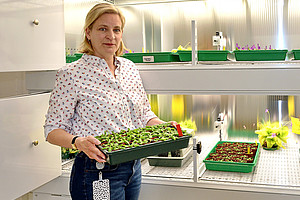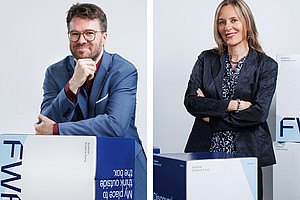SymProFold enables the fast and reliable prediction of envelope structures in just a few hours, a process that previously took researchers months or even years in the lab. "With SymProFold, we have developed a method that allows us to calculate the structure of of yet unsolved regular and symmetric protein assemblies in a short time," report Christoph Buhlheller and Theo Sagmeister from the Institute of Molecular Biosciences at the University of Graz. The only necessary input is the sequence of the protein that constitutes the lattice. The predicted structure can be further confirmed in the laboratory. Using the SymProFold derived knowledge, the experiments can be designed accordingly thereby saving valuable time and resources.
The key to nano-design for medicine and technology
Each type of virus, archaea or bacterium has its own surface structure. Virus shells are called capsids, those of bacteria and archaea are called S-layers - S for surface. The latter are particularly complex, supramolecular structures. "If we know exactly what these structures look like, we also know their strengths and weaknesses," explains Tea Pavkov-Keller, head of the research group. "The sites involved in assembly-related interactions can be targeted by drugs to disrupt the assembly process, preventing the formation of the protective envelope," explains the scientist.
This knowledge is also useful for other areas of nano-design. S-layers are interesting for the development of a wide range of applications, such as biosensors or coatings. Precise knowledge of the protein lattice structure makes it possible to give them very specific properties through targeted modifications.
SymProFold can be used by all scientists for research purposes.
The research is part of the BioHealth profile area at the University of Graz.
https://biohealth.uni-graz.at
Publication:
SymProFold: Structural prediction of symmetrical biological assemblies
Christoph Buhlheller, Theo Sagmeister, Christoph Grininger, Nina Gubensäk, Uwe B. Sleytr, Isabel Usón, Tea Pavkov-Keller
Nature Communications, 18. 9. 2024
https://doi.org/10.1038/s41467-024-52138-3 (https://www.nature.com/articles/s41467-024-52138-3)



